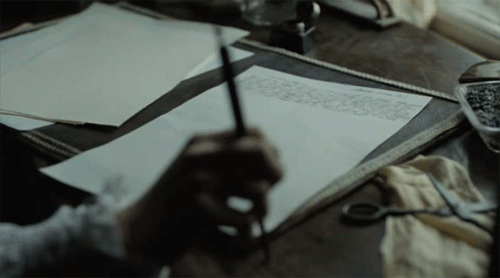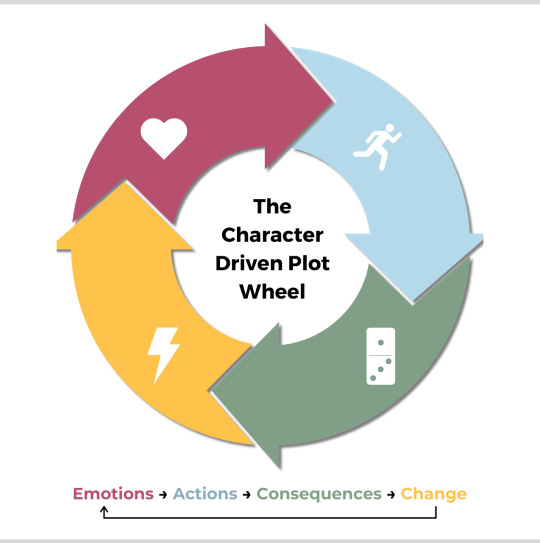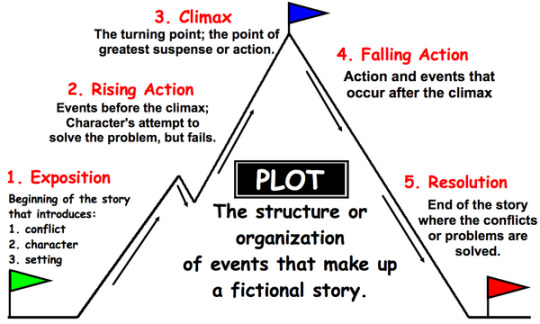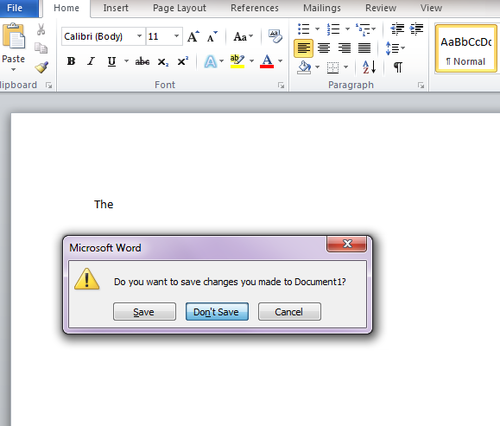Text
Speaking as someone who writes and reads a lot of character-driven stories, I think it would do us all some good to remember that people aren’t always consistent. So many writers end up falling into the trap of equating realism with consistency, giving themselves a headache in the process.
The truth is, people don’t always act and react in ways consistent with past actions. We’re constantly making choices and sorting through ourselves and our experiences, often subconsciously, in a way that can make actions unpredictable. This is doubly true of moments when we’re dealing with a lot of input over a short period of time.
Not only that, even the conscious choices we make can be inconsistent for seemingly no reason. Someone might teeter between dressing uber-formal and uber-casual without explanation. Some people (myself included) talk in a weird hybrid of over-formality and under-formality. Someone who likes going out on weekends has the capacity to just shrug on another and want to stay home. They’re not tired, they’re not stressed, there’s nothing wrong, they just don’t want to because humans are inconsistent and beautiful.
Inconsistency is a part of human reality, so why not give your characters the chance to react in new ways? You don’t have to hold yourself to writing them in such a way that every action is traceable because not every human action is traceable. Hell - it might even give you some ideas for new stories.
Just trust yourself and the characters you’ve created.
3K notes
·
View notes
Text
On Creating Characters- Six Points to Get You Started
As much as I like to complain about my weaknesses when it comes to writing, I’m happy to say that creating characters isn’t one of them. So for anyone who wants it- my quick guide on creating characters.
This list is for anyone who has a vague idea for a character but doesn’t have a plot or a role in the story for them to fill. It’s for people who have a plot in mind, but lack characters to place in it. It’s for people who love those long, detailed character spreadsheets, but don’t have the patience (or know all the answers) to fill them out. The points I’ve listed below will probably overlap heavily and influence one another- for instance, “societal/cultural influences“ may inform both “philosophy“ and “defining relationships“. It pulls the character together.
Keep in mind that this is not everything you want to know about your character- you should continue to flesh them out as you write them. This is just a baseline, a starting point, an I-just-want-to-write-something-with-this-character-but-I-know-absolutely-nothing-about-them list so you can jump into writing with or without a plot in mind. It describes them as they are on a typical, ordinary day. As you continue to write and develop them, they will become more nuanced and take on a life of their own.

Base Personality
Jot down some base personality traits. Don’t worry about getting an equal number of positive and negative traits down- or even which is which. Just feel out the character’s base personality.
Significant Historical Events
What events have had the greatest impact on your character (that you know of so far)? Again, don’t worry about getting everything- you can always add more here as they come to you later. Hit the major turning points in your character’s life.
Societal/Cultural Influences
What societal and cultural backgrounds do your characters have? Are they living/working/existing in an area where these influences are the majority or the minority?
Philosophy
What is your character’s default philosophy when it comes to right and wrong, or difficult moral choices? (I usually use the D&D alignment system for its simplicity- feel free to be as detailed or not as you wish).
Defining Relationships
What are this character’s defining relationships? Enemies, friends, and family are good places to highlight. Major conflicts and points of contention are great starting points for plots.
Goals
What does your character want more than anything? What are you preventing them from getting over the course of the story? If any minor goals pop up while you’re writing, jot those down too.
10K notes
·
View notes
Text
From NPR News
How Big Oil Misled The Public Into Believing Plastic Would Be Recycled https://www.npr.org/2020/09/11/897692090/how-big-oil-misled-the-public-into-believing-plastic-would-be-recycled?sc=18&f=1001
1 note
·
View note
Text
Pssst
Hey, are you an artist or writer with WIPs?
Come here... I got a secret for you pssst come ‘ere
189K notes
·
View notes
Text
To all the Writers Suffering from Depression
It’s okay. Your desire to write will return. Your desire to do other things you love will come back, too. You’re not weak. You’re just having a hard time right now. Try not to add self-judgment on top of everything else. Depression is hard enough without blaming yourself for it.
We (in the US specifically) live in a productivity-obsessed, emotion-phobic culture which blames individuals for “failing” when they are anything but hyper-productive and relentlessly optimistic. This cultural narrative so pervasive that it’s difficult to see the high standards we set for ourselves for what they really are: Complete and total bullshit.
Despite the rampant cultural garbage that teaches us to interpret emotional ups and downs as an aberration, MANY writers and artists (and people in general!) struggle with depression and other mood “disorders.” It is not uncommon for us, among other things, to go through periods of hyperactivity followed by depressive episodes in which we get very little accomplished. I am not saying you shouldn’t try to alleviate your depression or work to find ways to minimize your suffering in the short or long term. I’m just saying there’s nothing wrong with you, and you aren’t alone.
I’m going to say that again:
If you’re having a hard time writing or enjoying writing right now because you’re depressed, you aren’t alone.
I wish I had some kind of magical answer. I don’t. But I do know that accepting your depression and loving yourself anyway beats the hell out of berating yourself for feeling like this. So, with that in mind, this might be all I have to offer:
I think you’re doing a great job. I’m sorry you feel like shit. I’m on your side whether you’re writing or not; whether you feel good or not; whether you’re being “productive” or not; whether you wanted to get out of bed this morning or not. You’re still a writer to me, even if you’re not writing right now. You don’t have to prove yourself to me or anyone else. I love you, and I hope you feel better soon.
//////////////
The Literary Architect is a writing advice blog run by me, Bucket Siler. For more writing help, check out my Free Resource Library, peruse my post guide, or hire me to edit your novel or short story. xoxo
11K notes
·
View notes
Text
Camp Nano July 2020: Summary
Goal: 25,000 words
Won on: July 12th, 2020
Final Word Count: 63,333 words
Average Word Count: 2,043 words per day
Lowest Word Count: 829 words on July 7th
Highest Word Count: 4,574 words on July 2nd


okay that final word count number is so satisfying though???
@decantae and I decided to try our hand at Camp Nano this month with extremely low expectations. I’m so excited to announce that not only did we win, we wrote 253% of our goal!
We were actually coming off of writing 50k in June as detailed in this post here. When we decided to attempt our hand at Camp Nano, we decided to set a deliberately low goal for us in comparison because we were both convinced that after our success and push towards hitting 100k on our project in June, our word count would falter, and we didn’t want to push ourselves into burning out.
We hit our goal on July 12th. Seeing as it was a little less than halfway through the month, we did readjust our goal (not on the website, just on a personal level) to 50k while still keeping our expectations low — we wanted to keep our writing journey fun and not an obligation. The moment it became a chore, I’m sure we would’ve stopped writing.
Honestly, I did expect us to hit 50k based off of our performance and consistency since we started writing this project in April. Exceeding that goal by 13k however was something that I never even imagined. This is by far the most we’ve ever written in a single month!
Incredibly, as I’ve detailed in the two posts linked above, it has continued to be a relatively painless journey. Although there are some parts that I can feel are dragging or are a bit difficult, it was nothing that we couldn’t force our way past. It’s been such a joy to be able to write every single day with my best friend, just so I can read and reread everything we wrote and be extremely proud of what we’ve done.
In some ways, it’s easier to tackle a huge word count with a writing partner because we’re effectively halving that burden by sharing it. In other ways however, it can be so much harder because it requires both people to be pulling each other along, to be contributing, to be on the same page, to put equal amounts of labor and effort into it — with just one of those things missing, collaborative writing can screech to a halt. Somehow, decantae and I have managed to figure out something that worked for the both of us, and the payoff has been such a fantastic rush.
This has been the first Nano-related event that I’ve taken part in that hasn’t ended in me giving up on it one week in. As someone who has never been able to write for more than three days straight, this is a huge accomplishment and I am so, so proud of myself and so grateful for my writing partner.
Congratulations to all the other Camp Nano participants — whether you won or didn’t win, you all did absolutely fantastic! (And if you didn’t participate, I hope you had a wonderful month of writing triumphs as well!)
26 notes
·
View notes
Text

Drafting
The Draft Notebook
Be More Productive with Ambient Noise
How to Steal: Know Your Tropes
How to Steal: Good Writers Borrow
Write What You Know (Not What You’ve Experienced)
The Best Way to End a Writing Session
How To Finish a Draft
A Few Tips on Chapters
Language, Description, & Dialog
“To Be” Or Not “To Be”: What Exactly Is Passive Voice?
Tagging Dialog
Narrative Voice
Writing Better Descriptions
Basic Rules for Metaphors and Similes
Character, Plot, & Setting
Creating Characters: a 4-Step Process
Writing Relationships Your Reader Can Get Behind
Informative Character Names
The Strength of a Symmetrical Plot
How to Foreshadow
Crafting Homes of Paper, Ink, and Neutral PH Glue
Motivation
On Writing Flawed Books
How to Return to Your Manuscript
The Acknowledgements Page
Staring at Blank Pages
What to Do When You Can’t Write
Motivational Writing Posters
Publishing
Writing the Perfect Query Letter
How to Write a Synopsis
How to Pitch Your Novel in Under a Minute
A Glossary of Publishing Terms: Vol 1
Writing Tools
Why You Should Give Scrivener a Try
Outlining, Brainstorming, and Researching with Scrivener
Drafting with Scrivener
Editing with Scrivener
CTRL+F
The Forest Productivity App
Editsaurus
NaNoWriMo
Why Try NaNoWriMo
October Prep
Why Listen to Writing Podcasts
Pick a New Daily Word Count Goal
How to Write 2000 Words a Day
How to Plan a Novel without a Story
Pacemaker: Custom Daily Word Count Website
NaNoWriMo Master Post
Other
How to Read an Absurd Number of Books
Writing Workshops: An Introduction
Writing Groups
Different Types of Fantasy Novels
Ambient Soundscapes Based on Famous Writers
Ko-Fi & Other Support
If you enjoy my posts and can afford it, I would greatly appreciate it if you donated to my new ko-fi page! Each of these posts represents multiple hours of unpaid labor. I love writing for this blog, but I’m also an underpaid 20-something trying to stay afloat. I’ve made this master post of every essay I’ve written for this blog as a way to show my appreciation in advance of any support. If you donate, to further show my gratitude and appreciation, I’ll take requests for essay topics in the ‘messages of support.’
If you can’t afford to donate via ko-fi, another great way to show your support is simply by reblogging posts that you find useful and helping my blog reach new writers.
Thanks so much!
9K notes
·
View notes
Note
Do you have tips on making a strong female character without making her come off as an emotionless, cold, heartless b****?
“Strong Female Character” That Isn’t Heartless
Yes: stop assuming that strength requires lack of emotion. ;)
Seriously, though, this is a problematic interpretation of “strong female character” that is harmful and just plain wrong. Strength isn’t about being emotionless…
A strong character is able to stand on their own two feet, but can also accept help when they need it.
A strong character is able to face difficult things and make tough choices, but can allow themselves to be angry, sad, or even cry when they need to.
A strong character fights for what they believe in, but they also have the courage to change their position when new information comes in.
A strong character is brave in the face of danger, but they also know the difference between a smart battle and a stupid one.
A strong character makes mistakes and learns from them.
A strong character has flaws, but they’re always trying to do better.
A strong character can love and be loved, and they can fall in love, and they can have their hearts broken. But they don’t stop functioning.
A strong character can put on a tough face when they need to, but that doesn’t mean that they are cold, emotionless bitches.
Being strong has nothing to do with emotion or lack of emotion. :)
————————————————————————————————-
Have a question? My inbox is always open, but make sure to check my FAQ and post master lists first to see if I’ve already answered a similar question. :)
130 notes
·
View notes
Text
How to write a character-driven plot

The Character-Driven Plot Wheel
1. Emotions drive actions.
Make your hero act on their deepfelt emotions. This not only adds meaning to their actions, but also helps communicate to readers your hero’s core emotional struggle.
2. Actions trigger consequences.
When your hero acts, give their actions consequences that affect the plot, themselves, and/or the surrounding characters. For example, driven by curiosity, maybe your hero opens Pandora’s box; maybe they act recklessly and someone dies; or maybe they stand up for what they believe in, but at great personal cost. Consequences raise the stakes and empower your hero with agency.
3. Consequences compel change.
Use the consequences of your hero’s actions to create a crucible of growth — challenges and situations that force them to take the next step on their character journey. That step may be forward, or backward, and it may be large or small; but something inside them changes.
4. Change influences emotions.
When a character goes through a change, even a small one, allow it to affect them emotionally. Maybe they feel increasingly frustrated or guilty. Maybe they’re afraid, having just taken another step closer to abandoning their old way of seeing the world. Or maybe they finally feel peace.
Regardless of the form it takes, remember to reflect your hero’s change in their emotions. Then let their emotions drive action, to trigger consequences, which will compel further change.
Lather. Rinse. Repeat.
And there you have it! That’s how you write a character-driven plot.
So what do you say?
Give the wheel a spin.
— — —
Your stories are worth telling. For tips on how to craft meaning, build character-driven plots, and grow as a writer, follow my blog.
13K notes
·
View notes
Text

Writing With Color – Featured Description Posts
Some of our most useful posts on describing People of Color, all in one place.
Words to Describe Hair
Words to Describe Skin Tone
Describing Asian Eyes
Describing Wide Noses
Describing Undead & Sick Dark Skin
Describing POC and Avoiding Caricatures
Describing Unnatural Skin Tones: Green
Describing Unnatural Skin Tones: Jaundice
Indicating Race of Characters (FAQ Questions #3-4)
Not Indicating Race at All – Note: You Probably Should
Praising Beauty Without Fetishizing
Olive Skin, Race and Ethnicity
Specific Description Posts
Describing Skin as Swarthy (Spoiler alert: it’s sketchy)
Describing East Asian Skin as Porcelain (Spoiler alert: it’s also sketchy)
Describing Skin as Russet (Spoiler alert: it’s alright)
Describing PoC as Exotic (SA: it’s othering)
Describing Skin as Ebony (SA: it’s cliche)
Describing Natural Hair as Cloud-Like (SA: it’s cool)
Describing Black Hair as Unkempt (SA: it’s offensive)
Describing Black Hair as Kinky (SA: it depends)
Describing Skin as “Dark as Night” (SA: it also depends)
Describing Skin as Like Dirt or Soil (SA: See above)
Describing Skin as just “Dark.” (SA: it’s vague)
Describing Black Hair as “Nappy” (SA: it ain’t recommended)
Describing Skin With Food (SA: it’s a no-no)
–WWC
47K notes
·
View notes
Note
I’m wondering, how do I come up with good ideas to write a sub-plot that actually fits into the story and won’t make the reader lose the connection with the main plot?
How to Write A Sub Plot

If you look back on every single bestselling book ever printed, the chances are that most, if not all of them, contain sub-plots.
A sub-plot is part of a book that develops separately from the main story, and it can serve as a tool that extends the word count and adds interest and depth into the narrative.
Sub-plots are key to making your novel a success, and, although they aren’t necessary for shorter works, are an essential aspect of story writing in general.
However, sub-plots can be difficult to weave into the main plot, so here are a few tips on how to incorporate sub-plots into your writing.
1. Know Your Kinds of Sub-Plots and Figure Out Which is Best For Your Story

Sub-plots are more common than you think, and not all of them extend for many chapters at a time.
A sub-plot doesn’t have to be one of the side characters completely venturing off from the main group to struggle with their own demons or a side quest that takes up a quarter of the book. Small things can make a big difference, and there are many of these small things that exist in literature that we completely skip over when it comes to searching for sub-plots.
Character Arcs
Character arcs are the most common sub-plot.
They show a change in a dynamic character’s physical, mental, emotional, social, or spiritual outlook, and this evolution is a subtle thing that should definitely be incorporated so that the readers can watch their favorite characters grow and develop as people.
For example, let’s say that this guy named Bob doesn’t like his partner Jerry, but the two of them had to team up to defeat the big bad.
While the main plot involves the two of them brainstorming and executing their plans to take the big bad down, the sub-plot could involve the two getting to know each other and becoming friends, perhaps even something more than that.
This brings me to the second most common sub-plot:
Romance
Romance can bolster the reader’s interest; not only do they want to know if the hero beats the big bad guy, they also want to know if she ends up with her love interest in the end or if the warfare and strife will keep them apart.
How to Write Falling in Love
How to Write a Healthy Relationship
How to Write a Romance
Like character arcs, romance occurs simultaneously with the main plot and sometimes even influences it.
Side-Quests
There are two types of side-quest sub-plots, the hurtles and the detours.
Hurdle Sub-Plots
Hurdle sub-plots are usually complex and can take a few chapters to resolve. Their main purpose is to put a barrier, or hurdle, between the hero and the resolution of the main plot. They boost word count, so be careful when using hurdle sub-plots in excess.
Think of it like a video game.
You have to get into the tower of a fortress to defeat the boss monster.
However, there’s no direct way to get there; the main door is locked and needs to have three power sources to open it, so you have to travel through a monster-infested maze and complete all of these puzzles to get each power source and unlock the main door.
Only, when you open the main door, you realize that the bridge is up and you have to find a way to lower it down and so forth.
Detour Sub-Plot
Detour sub-plots are a complete break away from the main plot. They involve characters steering away from their main goal to do something else, and they, too, boost word count, so be careful not too use these too much.
Taking the video game example again.
You have to get to that previously mentioned fortress and are on your way when you realize there is an old woman who has lost her cattle and doesn’t know what to do.
Deciding the fortress can wait, you spend harrowing hours rounding up all of the cows and steering them back into their pen for the woman.
Overjoyed, the woman reveals herself to be a witch and gives you a magical potion that will help you win the fight against the big bad later.
**ONLY USE DETOUR SUB-PLOTS IF THE OUTCOME HELPS AID THE PROTAGONISTS IN THE MAIN PLOT**
If they’d just herded all of the cows for no reason and nothing in return, sure it would be nice of them but it would be a complete waste of their and the readers’ time!
2. Make Sure Not to Introduce or Resolve Your Sub-Plots Too Abruptly

This goes for all sub-plots. Just like main plots, they can’t be introduced and resolved with a snap of your fingers; they’re a tool that can easily be misused if placed into inexperienced hands.
Each sub-plot needs their own arc and should be outlined just like how you outlined your main plot.
How to Outline Your Plot
You could use my methods suggested in the linked post, or you could use the classic witch’s hat model if you feel that’s easier for something that’s less important than your main storyline.

3. Don’t Push It

If you don’t think your story needs a sub-plot, don’t add a sub-plot! Unneeded sub-plots can clutter up your narrative and make it unnecessarily winding and long.
You don’t have to take what I’m saying to heart ever!
It’s your story, you write it how you think it should be written, and no one can tell you otherwise!
Hope this Helped!
12K notes
·
View notes
Text

Take all the time you need to write. You are working on something beautiful that will be loved no matter how fast or slow it gets done.

83 notes
·
View notes
Text
Hey! You! If you call yourself an “aspiring author” stop it! You are not an “aspiring” author. You ARE an author. I don’t care if you’ve written three books, three paragraphs, or even three sentences. If you put effort into these three sentences, and world build, and daydream, and write ideas, and fantasize about having an entire fandom based off of your unfinished book series, you’re still a writer!!! You don’t need to have an entire movie franchise, merchandise line, and an entire hashtag dedicated to fanon ships on tumblr to be an author. If you want to be an author, all you have to do is write three really good sentences, that will eventually lead to all those cool things. You don’t need to have a fandom to be an author. You need to have an idea to be an author.
229 notes
·
View notes
Photo

Sign up for our free writing course and learn how to show and not tell in short stories.
We have put together one of the best short online writing courses in our library and we want to share it with you for free.
FREE COURSE: How To Show And Not Tell In Short Stories
29 notes
·
View notes
Text
“I’m finally going to write! I have a great idea!”




601K notes
·
View notes
Text


a.k.a. you may find your work Bad and Cringy™️ but you wrote something and that’s a Good Thing™️.
All writing is good practice and progresses you as a writer.
85K notes
·
View notes
